Growing herbs in a greenhouse? These are the 6 most likely to be successful
Continue growing and picking many herbs during fall and winter by bringing them indoors

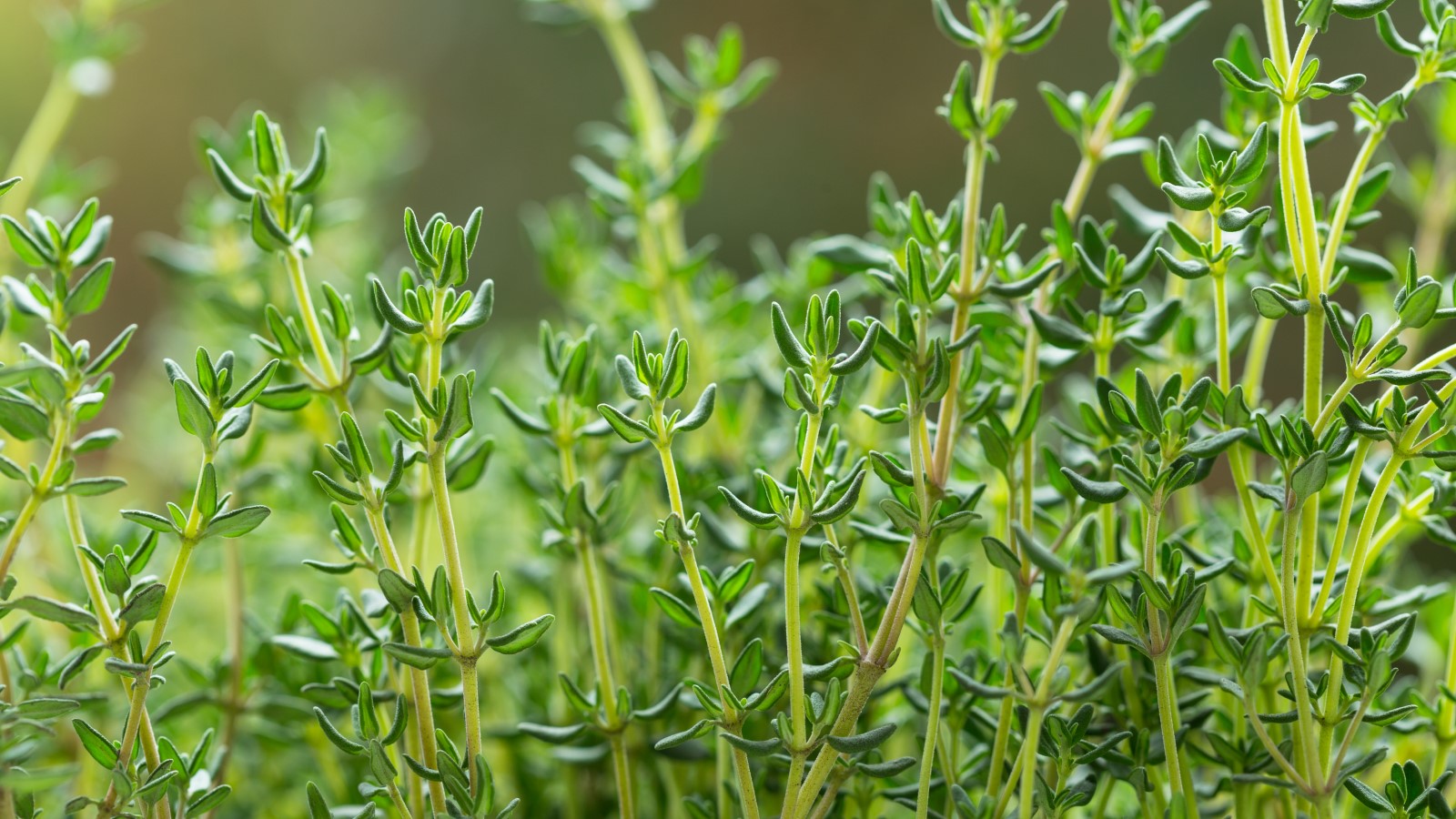
Herbs traditionally grow outside, often in a dedicated herb garden, but they are also commonly used as part of beds and borders or as edging plants around paths or decks. A lot of herbs are grown as annuals, while perennial herbs tend to go dormant in winter and then start growing again in the spring.
But what if you want fresh herbs throughout the fall and winter months? There are a couple of options. You can grow herbs indoors on a windowsill or, if you have a greenhouse, then you can bring herbs indoors in fall to continue growing and provide a harvest during the colder months.
If you want to include herbs as part of your greenhouse ideas this fall, then we take a look at 6 of the best that can be brought into a backyard greenhouse to keep growing and give you crops of delicious leaves.
Growing herbs in a greenhouse: 6 top plants
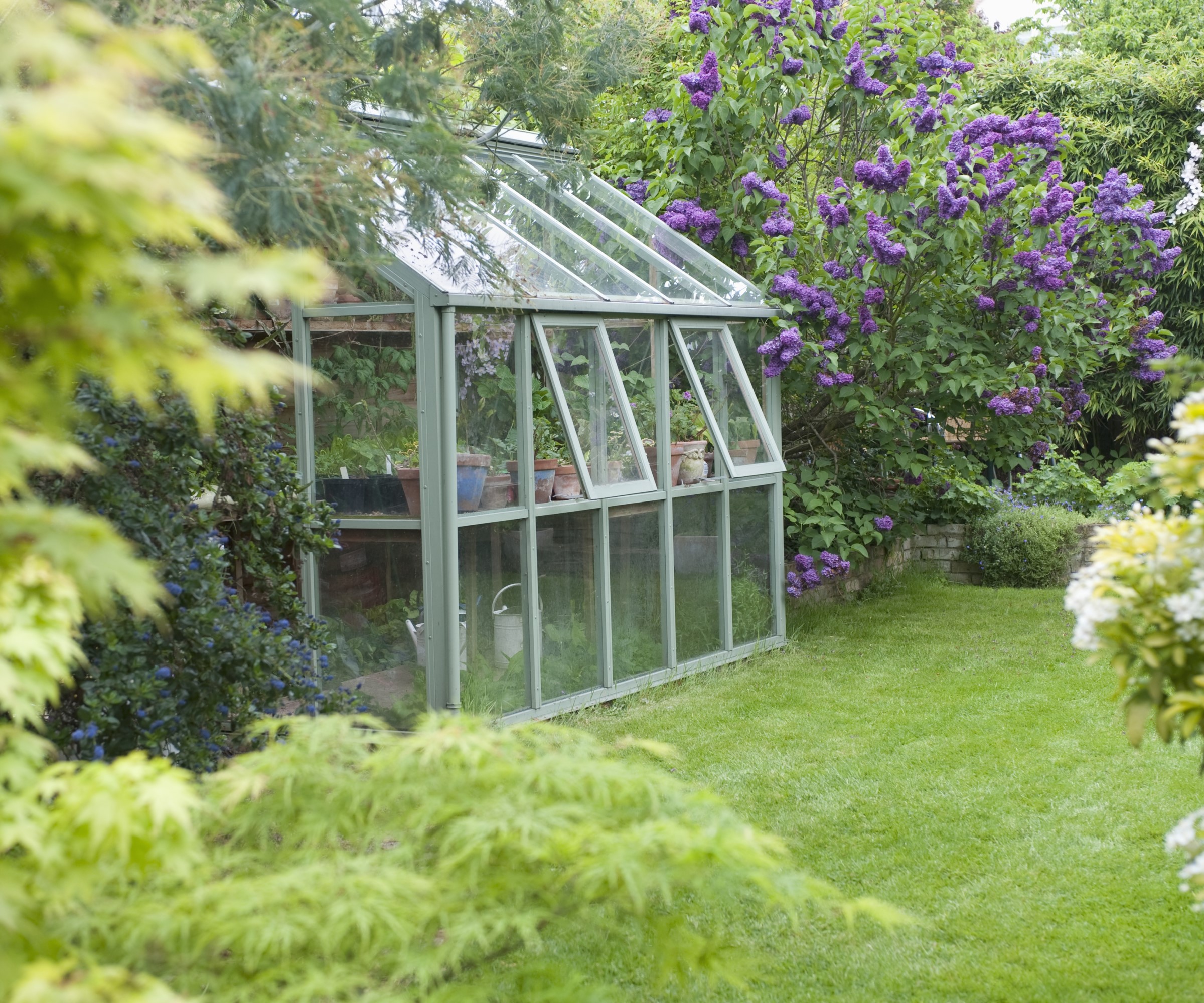
Greenhouses are great at extending harvesting seasons
1. Chives
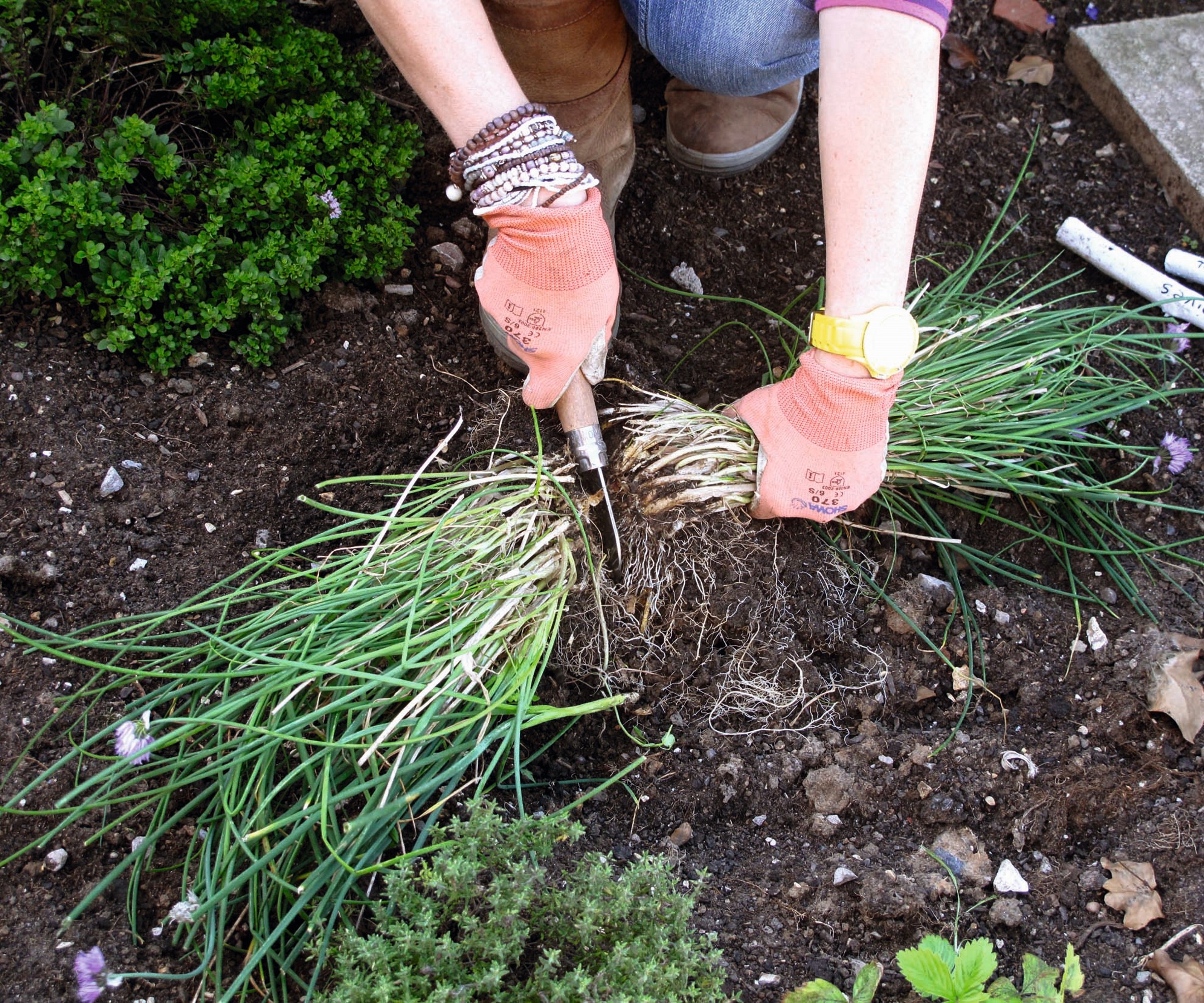
Clumps of chives can be easily divided and re-planted
Chives are renowned for their mild onion taste and edible purple flowers. These perennial herbs are really easy to look after but they will enter a period of dormancy when temperatures plummet towards freezing.
If you have clumps of chives growing outdoors then the sections can be dug up and divided. Plant some small sections in pots to continue to grow in the greenhouse and cut back the foliage. Potting the chives up and moving them indoors will encourage fresh shoots and the plants will quickly sprout new leaves.
If you are growing chives in pots or herb planters then these can simply be brought undercover and given a chop to encourage new shoots. You will then be able to harvest chives throughout fall and winter for all of your culinary desires.
Buy chive seeds and plants from Burpee
Design expertise in your inbox – from inspiring decorating ideas and beautiful celebrity homes to practical gardening advice and shopping round-ups.
2. Parsley
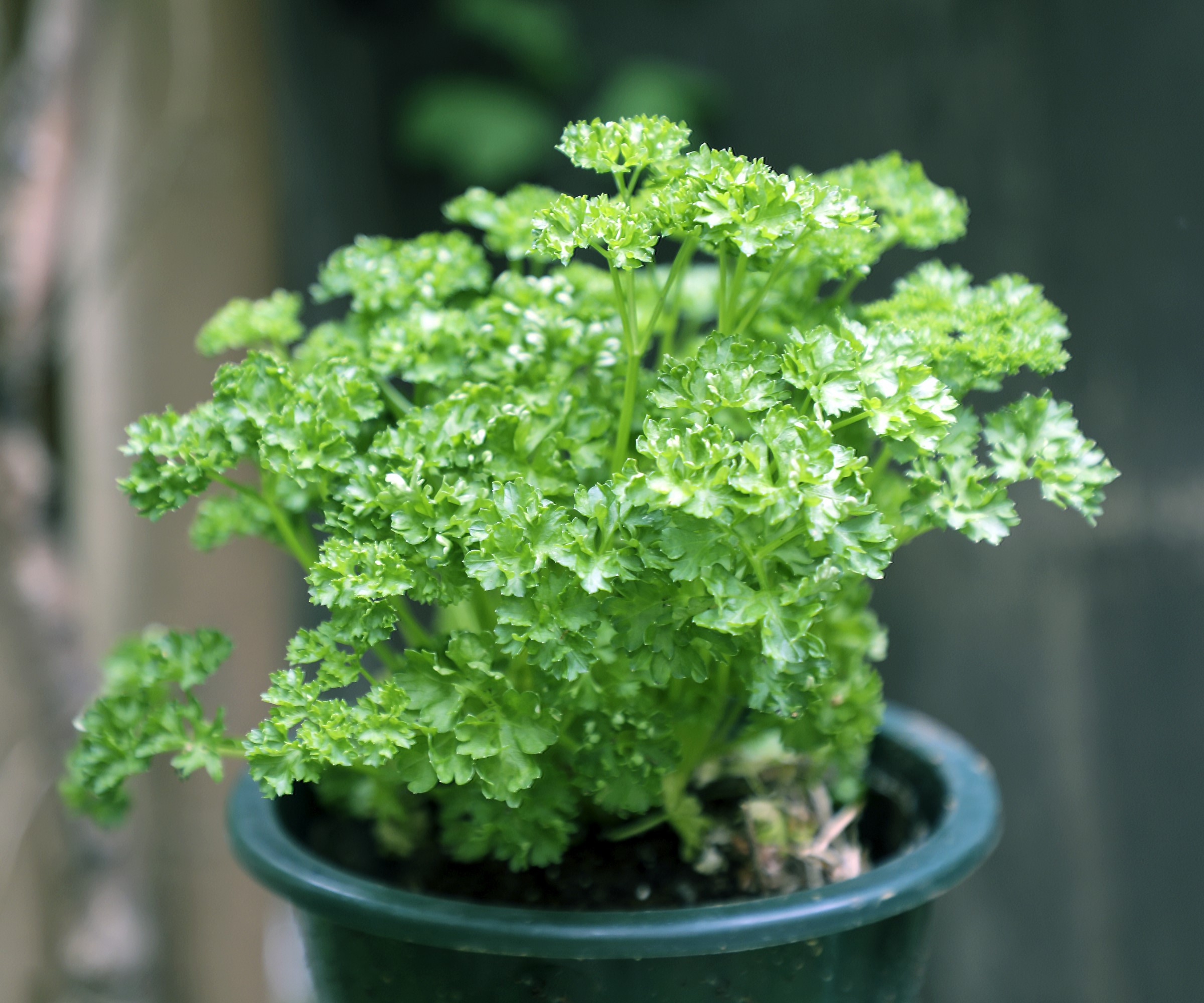
Parsley has a mildly bitter taste and often divides opinion
Parsley comes in flat or curly varieties and is a biennial that is usually grown as an annual. While it can grow happily outside in a sunny spot in the herb garden during the summer months, it benefits from being brought indoors to grow during fall and winter.
When it comes to growing parsley indoors, established plants can be brought in or young seedlings can be planted to give you a harvest of parsley in fall and winter. Care needs to be taken when digging up and moving parsley as it can be tricky due to the plant’s large taproot.
Keep a close eye on aphids when growing herbs indoors such as parsley - luckily a simple way to get rid of aphids is to spray them with insecticidal soap, such as Captain Jack's Insecticidal Super Soap available at Walmart.
3. Mint
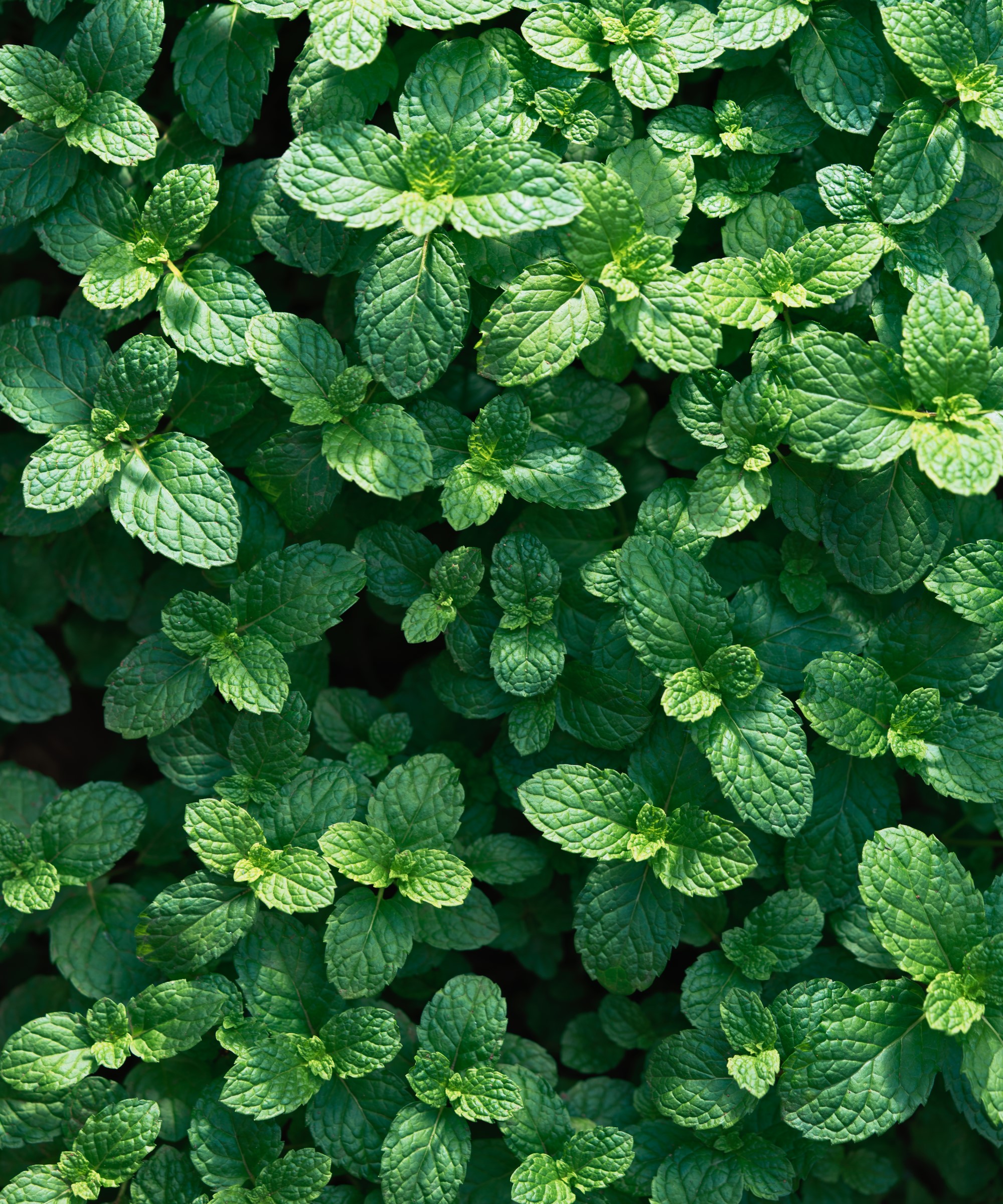
Mint can spread rapidly if not contained or maintained properly
Mint is a great option for growing herbs in pots to keep it maintained, given its reputation for spreading easily. Wherever you plant mint, you need to keep it contained in some way otherwise it can spread quickly.
Mint is a perennial that dies back for winter but pots of this aromatic herb can continue to grow indoors and provide leaves for cooking, teas, or even cocktails. There are hundreds of varieties of mint available that could thrive in a greenhouse in pots filled with a good potting soil for herbs that is fertile and drains well. An example of a perfect potting soil for herbs is Burpee's premium organic potting soil, available from Burpee.
Growing mint in a greenhouse also offers additional benefits as it is a fly repellent plant and produces a smell that ants hate – so it can help keep these pests out of your growing space.
Buy mint seeds and plants at Burpee
4. Cilantro
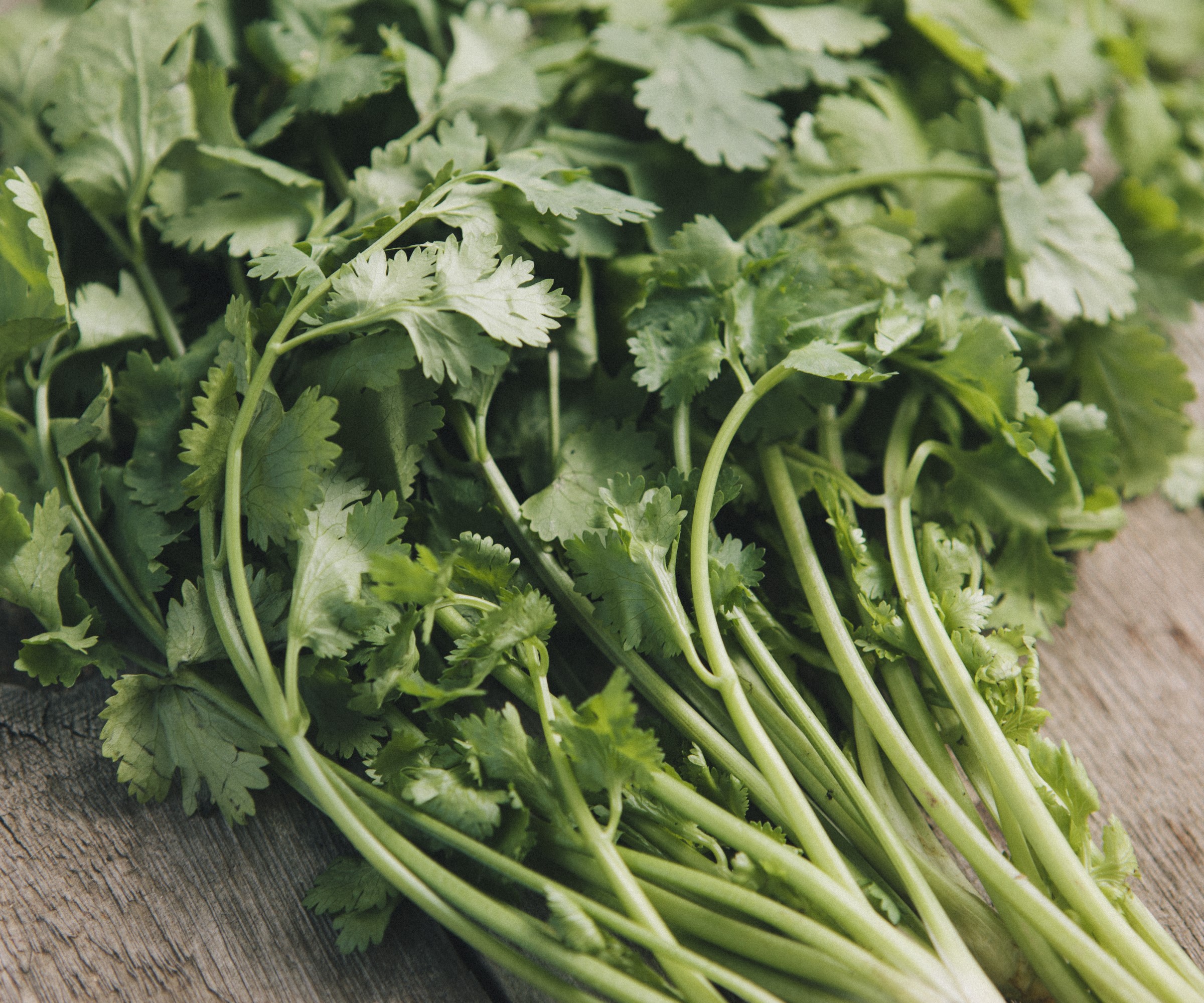
Cilantro has a fragrant taste, but tastes milder when dried
Cilantro tends to be grown as an annual herb but can be grown in a greenhouse if you can replicate the conditions it wants.
It does not want the temperature to be too cold or too hot, therefore planting in spring and fall are ideal to prevent it bolting. When growing cilantro it wants temperatures to be between 60-80℉ – if you can keep your greenhouse cool and frost-free then overwintering cilantro might be achievable.
It is a plant that gives you two potential harvests. You can harvest cilantro leaves and, if the plant bolts and produces flowers, you can also harvest coriander seeds to be used either in cooking or to grow new plants. A planting of cilantro in early fall will be able to provide you with fresh leaves throughout the winter months.
Buy cilantro seeds from True Leaf Market
5. Dill
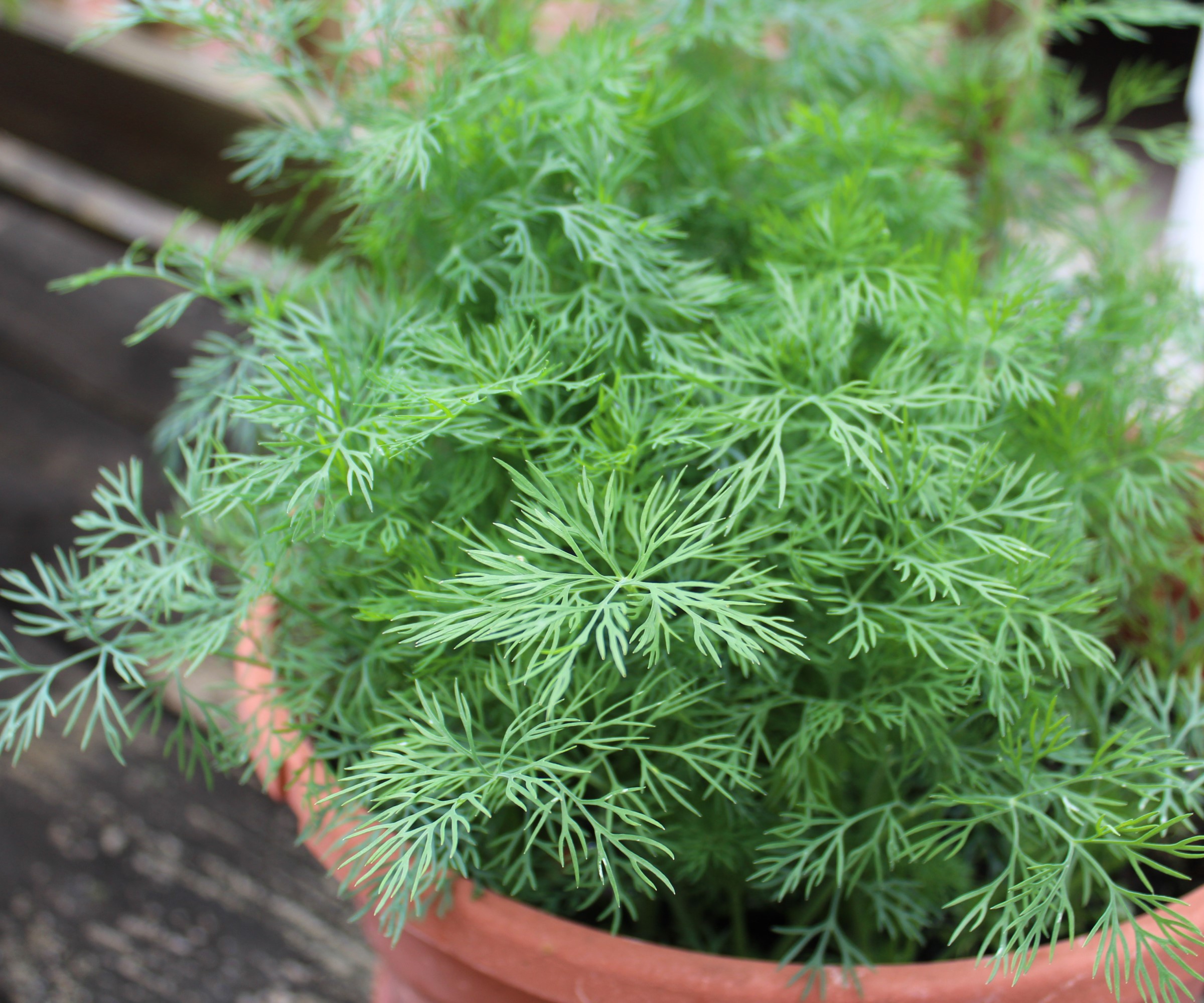
Dill repels brassica pests so is a great companion plant for those vegetables
Dill is another cool-season crop that likes the lower temperatures of spring and fall, rather than the summer heat that will cause it to bolt. When you are growing dill it is best to sow the herb directly into its growing spot as it does not like root disturbance that happens when you transplant seedlings.
Dill grows around three feet tall and is popular for its feathery leaves that have a flavor of aniseed. The crop can be sown in early fall to grow undercover and give you a dill harvest throughout the following months. It is also possible to grow dill from cuttings, but this is not a traditional route of propagating the herb.
Dill can be a useful herb for companion planting, but if you are also growing carrots in your greenhouse in fall then do not use it for carrot companion planting as the herb actually cross-pollinates with the carrots.
Buy dill seeds from True Leaf Market
6. Thyme

Thyme is a popular decorative plant thanks to its purple or white flowers
Thyme is a Mediterranean plant that is really easy to grow and it is another that goes into dormancy over winter. If you want to continue growing thyme indoors over winter, then you can dig up clumps to replant.
Make sure thyme is planted in really well-draining soil as it does not like sitting with wet roots. A lack of drainage is a common herb gardening mistake to avoid, so consider adding some grit to your potting mix if planting thyme in containers in fall.
When moving thyme to grow on in a greenhouse, give the plant a trim when potting it up and it should quickly start putting out new growth that can be great for cooking with over the winter months.
Buy thyme seeds and plants at Burpee
FAQs
Do herbs grow better in a greenhouse?
Herbs can benefit from the protected environment of a greenhouse and some tender annual herbs will really thrive in a greenhouse, for example when growing basil. Many herbs can happily grow in a greenhouse year-round, but they are also perfectly suited to growing outdoors. It is often more efficient to dedicate valuable indoor space to more tender and heat-loving crops. In addition, the likes of cilantro, dill, and parsley are likely to go to seed if grown in a greenhouse during summer.
If you are planning to create a herb garden, then there is such a huge range of herbs that you can choose from. So why not extend the season for many of these herbs by moving them indoors and make sure to factor this in when planning a greenhouse for the year.

Drew has worked as a writer since 2008 and was also a professional gardener for many years. As a trained horticulturist, he worked in prestigious historic gardens, including Hanbury Hall and the world-famous Hidcote Manor Garden. He also spent time as a specialist kitchen gardener at Soho Farmhouse and Netherby Hall, where he grew vegetables, fruit, herbs, and cut flowers for restaurants. Drew has written for numerous print and online publications and is an allotment holder and garden blogger. He is shortlisted for the Digital Gardening Writer of the Year at the 2025 Garden Media Guild Awards.